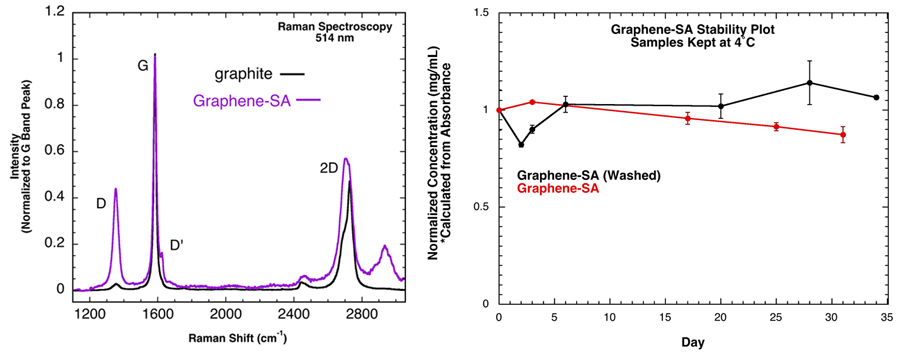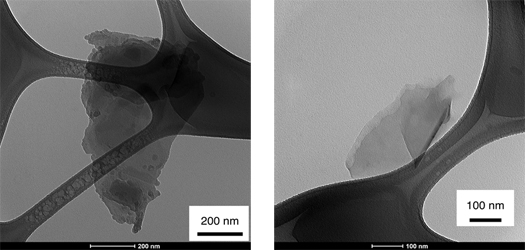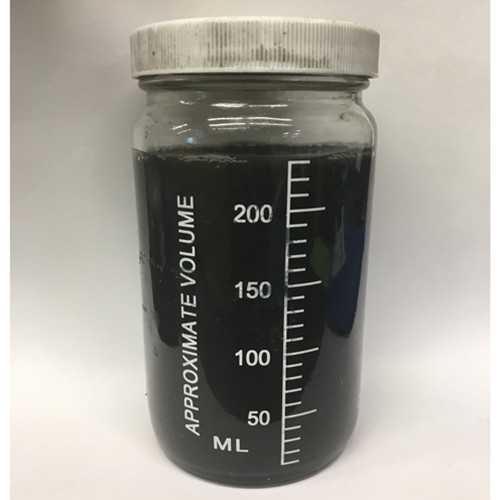BioGraphene Gr-SA
High concentration dispersion of graphene nanoplatelets stabilized in a bovine serum albumin (SA) solution for use in biological applications.
Highlights:
- Produced without chemical treatment or post modification
- Nanoplatelets are about 5-6 layers, 0.5 µm sized sheets
- Little or no oxidative defects as seen using Raman spectroscopy
From the laboratory of C. Vijaya Kumar, PhD, University of Connecticut.
High concentration dispersion of graphene nanoplatelets stabilized in a bovine serum albumin (SA) solution for use in biological applications.
Highlights:
- Produced without chemical treatment or post modification
- Nanoplatelets are about 5-6 layers, 0.5 µm sized sheets
- Little or no oxidative defects as seen using Raman spectroscopy
From the laboratory of C. Vijaya Kumar, PhD, University of Connecticut.
Specifications
| Product Type: | Small Molecule |
| Particle Morphology: | Thin sheets |
| Functionalization: | surface protein amine and carboxyl groups |
| Internal Contents: | Protein, carbon |
| Format: | aqueous solution |
| Concentration: | 5mg/mL |
| Size Distribution: | ±0.2um |
| Mean Diameter: | 0.5um |
| Nanoparticle Consistency: | Uniform |
| Comments: | Refractive index = 1.35 |
| Storage: | -20C; stir before use |
| Shipped: | Cold packs |
Data
Raman Spectroscopy and Stability Analyses

(Left) Raman spectrum of biographene (purple line) is compared with graphite (black) shows increase in intensity of D band (~1350 cm-1), D' band (~1625 cm-1), and increase in 2D-30 cm-1 shoulder intensity, characteristic of 4-6 layer graphene. (Right) Stability of washed Graphene-SA (most of the protein is removed) as well as unwashed Graphene-SA, at 4˚C. The washed graphene-SA sample is stable for more than 30 days at 4˚C and the half-life is estimated to be about 115 days at 4 ˚C. Commercial sample is the washed sample.
Transmission Electron Microscopy Images of Graphene-SA Sheets

(Left) Shows a jagged few-layered sheet, about 0.6 µm in length. (Right) The sheet appears folded on itself and is transparent, indicating very few layers.
Conductivity Measurements

(A) Representative SEM images of the graphene-SA-coated paper confirming the presence of bound graphene. (B) Conductivity of the paper is illustrated by using the paper in an LED circuit. (C) Conductivity of the graphene-SA-paper was measured using a 4 probe system and a steady current was observed from 0 V to 40 V. Conductivity was calculated to be 32,000 S/m.
Provider
From the laboratory of C. Vijaya Kumar, PhD, University of Connecticut.
References
If you publish research with this product, please let us know so we can cite your paper.


